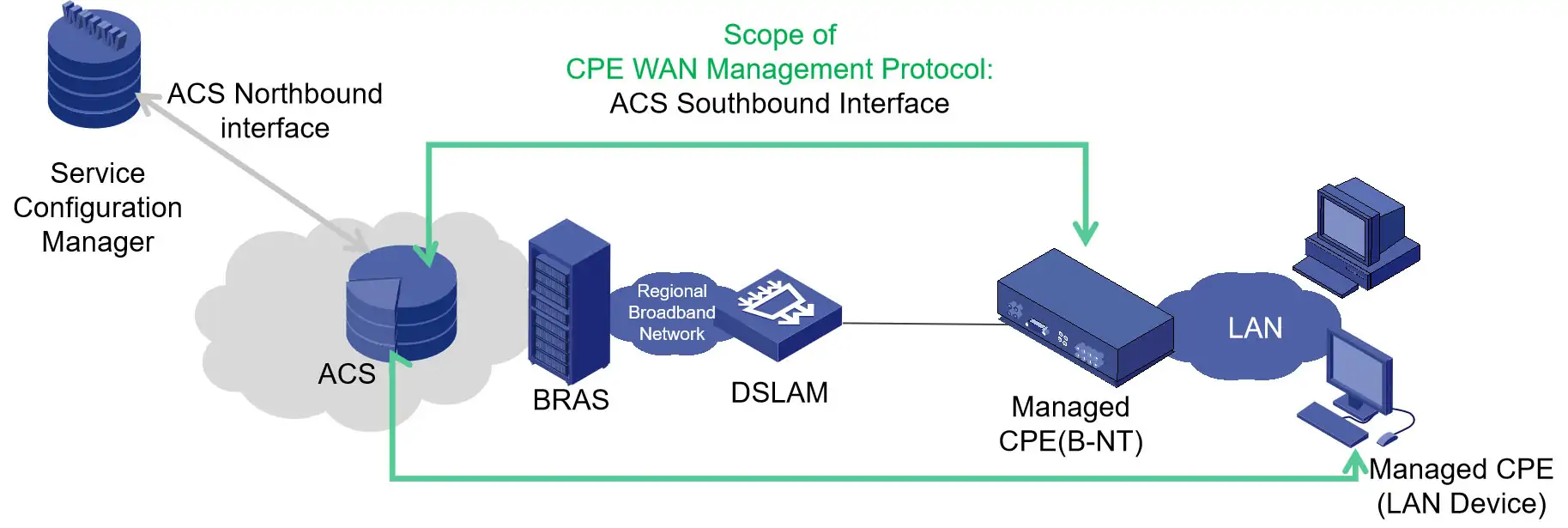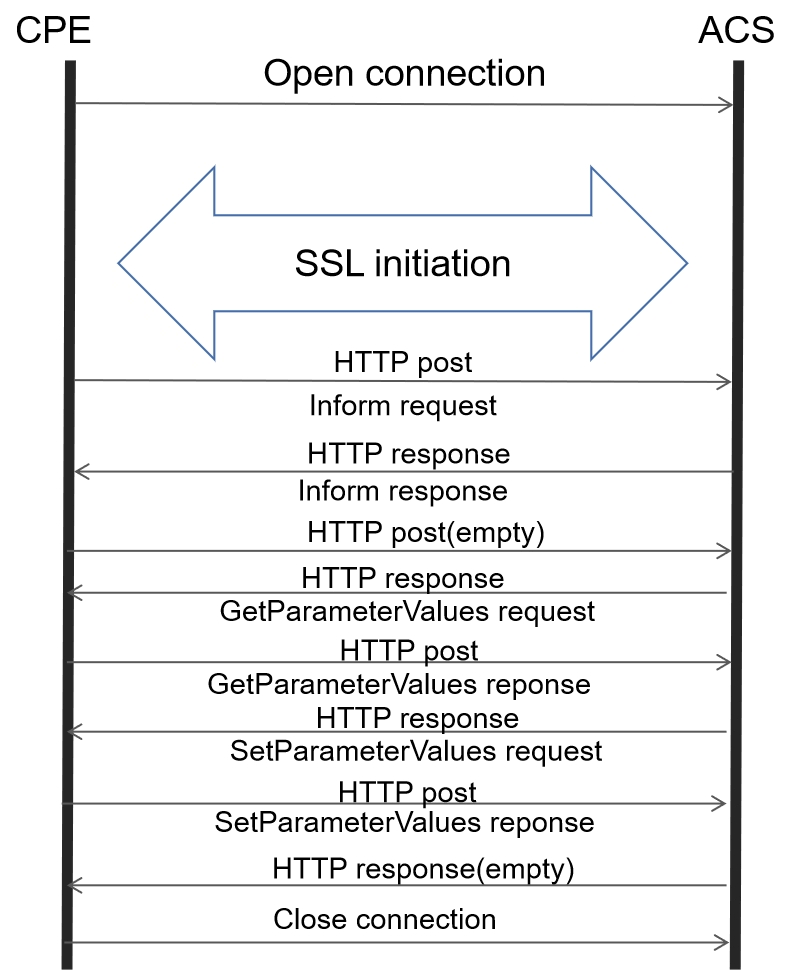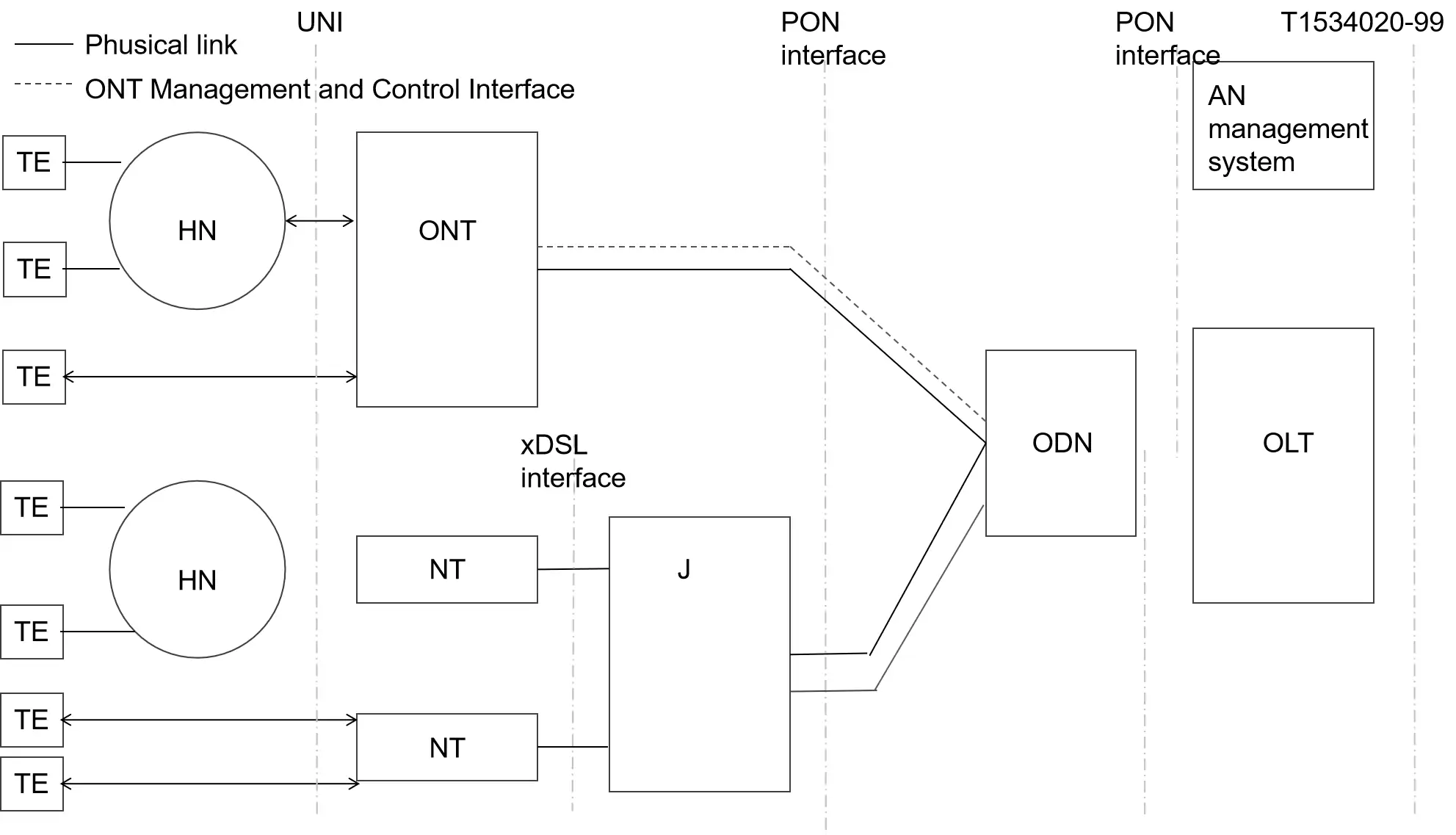Preface
The rapid development of information technology and extensive use of a large number of terminal access devices are challenging the types, volume, and scale of services carried by PON (Passive Optical Network). The increasing service of PON requires effective management for the customer premises equipment.
We learn from the previous article titled Differences between HGU ONU and SFU ONU that OLT configures and manages ONU through OAM / OMCI. There is a one-to-one mapping between the GEM port on the WAN side and the UNI port on the LAN side in SFU ONU, so OLT can control each port and monitor the traffic of the ONU.
However, OLT fails to remote manage the HGU ONU due to that the data docking between OLT and ONU is through VEIP whose tasks nevertheless are configured by ONU itself, which is unacceptable for the gateway type ONU terminals widely used in the network of operators.
Management mode based on the TR069 protocol and the development of WAN connection based on private OMCI is two solutions applied to the remote management of ONU, facilitating the business distribution and saving the maintenance cost of operators.
The rest of this article will focus on the introduction and applications of the TR069 protocol and WAN connection configuration.
TR069 short for “Customer Premises Equipment (CPE) WAN Management Protocol (CWMP)”, is an Internet Protocol developed by DSL forum suitable for remote management of CPE. As the document number used to carry the protocol is TR069 in the DSL forum, it is referred to as TR069 protocol.
The management server, such as ONU, in the management mode defined by TR069 protocol, goes by the name of the Auto-Configuration Server (ACS) that is responsible for the management of Customer Premise Equipment (CPE). The interface between ACS and CPE calls the southbound interface, and the interface between ACS and other network management systems, service management systems, and billing systems (OSS / BSS) of operators is the northbound interface. While TR069 protocol mainly defines the standard of southbound interface and allows ACS to provide services to a CPE or a group of CPEs based on multiple standards.

Figure 1.1 Management Mode of TR069 Protocol
TR069 protocol describes a mechanism that builds a safe framework of automatic configuration and management for CPE by ACS and adds the management function of CPE to this framework. The purpose is to manage a CPE or CPE collection by achieving the following functions.
1.2.1 Auto-configuration and dynamic services provisioning. The parameters involved in the mechanism include both general parameters and user-defined parameters (such as WAN connection, Wi-Fi, voice, etc.), leaving more independent space for software implementation.
1.2.2 Software and firmware image management. Downloading and uploading files are available for CPE. The protocol provides a method to check the software or firmware version and can process files of signature data. After the end of file transfer, ACS will be notified whether return successfully or not.
1.2.3 Diagnosis. TR069 protocol supports the generation of effective diagnostic information by CPE. ACS diagnoses and solves connectivity or service problems with this information and powers with the pre-defined diagnostic ability.
1.2.4 Alarm. Event reports are actively sent by CPE to realize real-time alarms of equipment.
1.2.5 Traversing NAT connection. TR069 protocol allows ACS to manage devices following NAT but limits initiating sessions. The mechanism of TR111 is a supplement to TR069, which enables ACS to initiate a session. CPE will search for ACS server automatically in initial installation (CPE, when it leaves the factory, is configured with a default URL address that points to ACS server). Communication and download with ACS after successful connection can achieve, and the management after NAT gateway will be perfect..
The protocol stack structure of TR069 is shown in the following table:
| Layer | Description |
| CPE/ACS Management Application | The CWMP protocol can be achieved by the management application on the CPE and ACS respectively. The application is defined locally but not as part of the CWMP protocol. |
| RPC Methods | CWMP protocol defines various RPC methods to realize the interaction between ACS and CPE. The RPC method includes defining CPE parameters which can be accessed by ACS and the PRC method associated with this parameter. |
| SOAP | Remote encode based on standard XML syntax to avoid the conflict with firewall. |
| HTTP | HTTP 1.1 |
| SSL/TLS | Standard network transport layer security protocol (optional). SSL protocol specifies a layered mechanism that ensures data security between application protocol and TCP / IP protocol. It provides data encryption, server witness, message integrity and optional client authentication for TCP / IP connection to ensure that the data will not be changed during transmission. |
| TCP/IP | Standard TCP/IP |
The TR069 session begins with the connection between CPE and the TCP / IP of ACS. In the process of connection, CPE as the HTTP client sends its SOAP requests to ACS through HTTP post, while ACS as the HTTP server sends its SOAP request to the user’s device through the HTTP response. Each HTTP request can contain multiple SOAP requests or responses. Moreover, the parameter information of CPE can be configured and obtained through the set and get operations in this process. Finally, the connection closes.
To ensure the security of the management system, the TR069 protocol suggests SSL / TLS the authentication for the user equipment. The authentication method defined in HTTP 1.1 should be used if SSL / TLS is not allowed. The specific TR069 session flow is shown in figure 1.2.

Figure 1.2 TR069 Session Flow
In particular, since ACS and CPE are from different manufacturers, the node settings of ACS’s and CPE’s parameters are more or less different. There is a need for CPE manufacturers to make adjustments according to the parameters of ACS. This is the reason why we get feedback from customers that it is impossible to configure C-Data ONU through TR069 protocol on ACS.
Generally, the HGU ONU on the market, for the convenience of management, configuration, and monitoring, has to support the TR069 protocol.
WAN is the abbreviation of Wide Area Network. WAN connection refers to the way a device connects to a WAN. For example, there are user-oriented interfaces, including POTS telephone interface, broadband LAN interface, WiFi wireless interface, and so on in a home gateway.
In EPON and GPON, the protocols that OLT used to manage ONU in EPON and GPON are OAM and OMCI, respectively. Here we take OMCI as an example.
OMCI (ONU Management and Control Interface) is a kind of transmission channel defined in GPON standard to transmit OMCI messages by establishing a proprietary ATM PVC or GEM PORT between OLT and ONT. It is available for configuration management, fault management, performance management, and security management of ONU devices. ONT establishes the OMCI channel when registering with OLT. OMCI is a master-slave management protocol in which the OLT is master, and the ONT is the slave. OLT controls multiple ONT devices under OLT through the OMCI channel. Figure 2.1 shows the OMCI model for reference.

Figure 2.1 OMCI Model for Reference
OLT and ONU interact through OMCI. GPON standard protocol defines the OMCI message format, as shown in Table 2.1:
| Segment | ATM/GEM Header | Transaction Correlation Identifier | Message Type | Device Identifier | Device Identifier | Message contents | OMCI Trailer | |
| Length(byte) | 5 | 2 | 1 | 1 | 4 | Baseling | 8 | |
| 32 | ||||||||
| Extend | ||||||||
| 2 | 0-1964 | |||||||
Table 2.1 OMCI Message Format
The explanation of each field is as follows:
ATM/GEM Header:Itcontains information to distinguish different GEM ports.
Transaction Correlation Identifier: the numericalvalue of this field should be consistent in a group of messages corresponding to requests and responses. In the Baseline OMCI message, the highest bit of this field indicates the priority of the OMCI message.
Device identifier: 0xA represents the Baseline list, and 0xB stands for the Extend list.
Message identifier: a 2-byte entity or instance ID
Message Contents: packet payload.
OMCI trailer: two bytes are packet length 0x28 and four bytes are CRC32 for Baseline OMCI message; while only four bytes for Extend OMCI.
Message Type:
DB (Destination Bit): it is consistently 0.
AR (Acknowledge Request): whether an OMCI message requires the response.
AK (Acknowledge): whether an OMCI message is a response.
MT (Message Type): supports up to 32 message types and message types 4 through 28 are defined in the protocol.
The specific definition of relevant configuration parameters of WAN connection will not be detailed here as they are defined by the equipment manufacturer in Baseline list.
As a matter of fact, there is no relevant configuration parameters of WAN connection in G984 / G988 standard. Therefore, some relevant parameters is defined in Extend list by the device manufacturers to meet the needs of users and the WAN connection becomes a private protocol of the equipment manufacturer. It throws out the requirement that private protocol of the equipment manufacturer should be available for both OLT and ONU.
TR069 protocol and WAN connection differ in application due to difference of protocols. Three aspects are compared as follows:
Cost performance
A TR069 server has to be set up in the network if TR069 management method is applied. The configuration and operation cost of TR069 server is nothing to large-scale operators or ISPs. Moreover, TR069 can effectively solve the problem of batch distribution for ONU’s service. However, small-scale operators or ISPs prefer more economical solution as the cost of TR069 server is too high for them. WAN connection that only need to be compatible with software on OLT is the key to them, without any hardware cost.
Compatibility
There are compatibility problems for TR069 protocol and WAN connection due to the difference of device manufacturers and definitions. It is relatively easy to deal with the compatibility problem of TR069 protocol by providing the information of each TR069 node they need to the home gateway manufacturers for software compatibility processing.
As for the compatibility of WAN connection, C-Data sets its own private protocol to realize the configuration of WAN connection. Nevertheless, if there are third-party ONU devices in the system, the third-party ONU manufacturers requires to do compatibility development.
Easy to manage
Only the network between the TR069 server and the home gateway device is interoperable can the TR069 server effectively manage the home gateway and automatically configure the terminal device successfully registered on the server. There are many subnets and routers between the server and CPE, so the network is relatively complex. If the network is unstable, TR069 server will be difficult to manage the home gateway equipment. Therefore, a strict requirement is for TR069 server and its network.
It is much more convenient and easier for WAN connection to configure and manage home gateway than that of TR069 server. That is because there is only one optical fiber between OLT and ONU and no complex network structure. OLT still manage ONU even if the user’s Internet service is not available as long as the ONU is registered with OLT.
| No. | ONU Configuration | ONU Model | TR069 | WAN Connection |
| 1 | EPON&GPON&XPON 1GE/1GE+CATV | FD511G&FD701G series | Not support | Support |
| 2 | EPON&GPON&XPON 1GE+wifi/1GE+1FE+wifi/ 4GE+2pots+wifi(AC) | FD511GW&FD512XW&FD702XW&FD604GW&FD804GW series | Support | Support |
| 3 | EPON&GPON&XPON 1GE+3FE/1GE+3FE+CATV/4GE | FD50X&FD704X&FD504G series | Not support | Not support |
You may come to a clear understanding for TR069 protocol and WAN connection from the above introduction. TR069 protocol and WAN connection are two management methods that both can realize the remote management of gateway ONU and have their own characteristics. When it comes to which one is the best, it spends on your specific networking and requirements.
As a professional supplier of FTTH broadband access products, Shenzhen C-Data Technology Co., Ltd. will forge ahead to enhance technical ability, develop applicable products that cater to customers’ needs, and escort the construction and development of customers’ network.